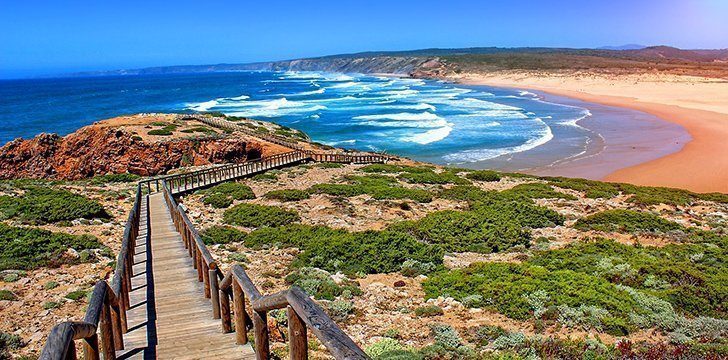The Algarve is Portugal’s southern coastline that overlooks Morocco and joins Spain.
It has been occupied by many different people, and this is reflected in the culture that remains.
Portugal has a population of around 10.3 million as of 2023. Despite this low population, it significantly influences European culture, from food to drink and music.
Their flag is made up of the colors green and red, with the nation’s crest in the center. The red represents the blood shed for freedom, and the green represents hope for the future.
Here are five mysterious facts you probably didn’t know about the Algarve Coast that will make you want to visit Portugal!
The Algarve was inhabited by The Moors, Arabic tribes from Morocco, until the first King of Portugal defeated them all.

Even after this period, there was still considerable Arabic influence in the region, leading to several curiosities.
For example, there are a lot of place names along Portugal’s coastline that begin with “Al,” like Algarve.
The prefix “Al” in Arabic simply means “the.”
Algarve was once called Gharb Al-Andalus (The West of Al-Andalus), which in time was shortened to “Al-Gharb” (The West), which in turn became Algarve.
One thing that stands out when visiting the Algarve Coast is the tiling.
The houses and streets are beautifully decorated with brightly colored blue tiles.
These are called Azulejos and were first used by the Portuguese in the 16th and 17th centuries, although they had existed within Spain from the 13th century when the Moors brought them over.
The word Azulejos is derived from the Arabic word “al-zillīj,” with “zillij,” meaning “polished stone.”
Portugal has two coastlines.

One runs north to south along the Atlantic Ocean, and the other runs east to west connecting the Atlantic to the Mediterranean Sea.
The coastlines mainly consist of golden beaches with beautiful fauna, but along the Algarve, there are some unique rock formations.
These are made of limestone rock and contain some spectacularly mysterious caves for everyone to explore.
One awe-inspiring cave worth exploring is the Benagil Cave, which formed about 20 million years ago.
It’s not easy to get to, though, as it sits beneath the cliffs and is only accessible by water.
Ria Formosa is a National Park situated on the Algarve coast.
It is made up of salt flats and salt marshes, and believe it or not, is home to flamingos!
The area is protected by a 37-mile (60-kilometer) sand dune and is made up of 69.5 square miles (180 square km) of tidal marshes.
The Ria Formosa National Park is home to various breeds of flamingo, but the most commonly found here is the Great Flamingo, Phoenicopterus roseus, which is distinguished by its large size and pale color.
A famous dish from the Algarve is Piri Piri Chicken.
Piri Piri Chicken, a renowned culinary delight from the Algarve region of Portugal, traces its roots back to the 15th century when Portuguese explorers came across the fiery piri piri chili pepper in Mozambique, Africa.
This flavorful dish is believed to have been invented by Portuguese settlers who brought the piri piri pepper back to the Algarve.
They combined it with their traditional grilling techniques and seasonings to create a uniquely spicy and tangy chicken recipe.
Today, Piri Piri Chicken is celebrated worldwide for its intense spiciness, juicy tenderness, and vibrant flavors.
It has become a symbol of Portuguese cuisine and is often enjoyed with traditional sides such as grilled vegetables, rice, and crispy fries.
As we bid farewell to the Algarve Coast, Portugal, we hope these astounding facts have ignited your curiosity and sparked a newfound appreciation for this remarkable region.
From the hidden wonders of the Ria Formosa National Park to the tantalizing flavors of Piri Piri Chicken, the Algarve is a destination like no other.
So, next time you’re seeking a beach getaway with a twist, consider the Algarve and prepare to be captivated by its rich history, stunning landscapes, and mouthwatering cuisine.





















